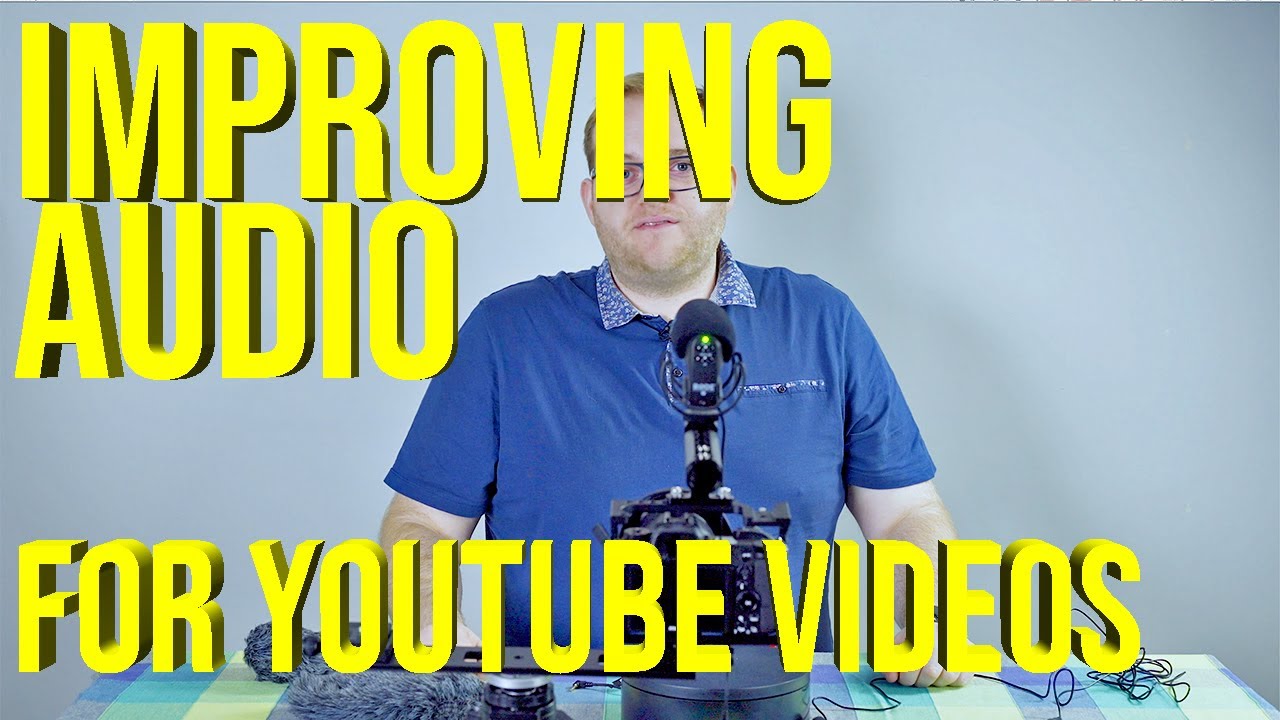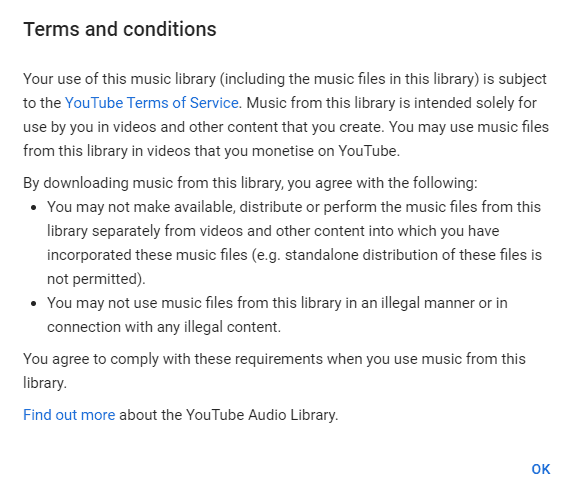When it comes to YouTube, many creators often wonder about the rules surrounding the use of audio from videos. Whether you’re a budding YouTuber or someone looking to add some flair to your content, understanding these guidelines is crucial. Not all audio used in YouTube videos is free to use, and getting it wrong can lead to problems like copyright strikes or removed content. In this section, we'll unravel the mysteries of
Copyright Basics and Its Importance

Now, let's dive into copyright basics and why they matter, especially for anyone creating or sharing content online. Copyright is a form of legal protection that grants creators exclusive rights to their work, which can include music, film, and even written content. Here’s why it should be on your radar:
- Ownership Rights: Copyright gives the original creator the power to control how their work is used. This means that using someone else’s audio without permission can lead to potential legal consequences.
- Monetization: If you’re looking to monetize your YouTube channel, using unlicensed audio can jeopardize your ability to earn money from your videos, as copyright owners may claim ad revenue on your content.
- Credibility: Respecting copyright not only protects you legally but also enhances your reputation as a content creator. It shows that you value other creators' work.
Understanding copyright is essential for successful content creation. Here’s a quick overview of key terms:
| Term | Description |
|---|---|
| Copyright Owner | The individual or entity that holds the rights to the audio. |
| Fair Use | A legal doctrine that allows limited use of copyrighted material without permission, under certain conditions. |
| Creative Commons | A licensing system that allows creators to share their work under specific conditions. |
In conclusion, being aware of copyright basics is not just about avoiding legal trouble; it's about respecting and valuing the creative contributions of others in the vibrant world of online media.
What is Fair Use in Relation to YouTube Audio?

Fair Use is a term that often pops up in discussions about copyright, especially when it comes to using audio from YouTube videos. But what does it actually mean? In simple terms, Fair Use refers to the legal doctrine that allows individuals to use a limited amount of copyrighted material without obtaining permission from the rights holders. This can apply to videos, music, text, and more, but there are specific conditions that must be met.
Here are some key factors that contribute to what is considered Fair Use:
- Purpose and Character: If the use is transformative—meaning it adds new meaning, context, or expression—it may be viewed favorably. Educational, non-profit, or commentary uses often fall under this category.
- Nature of the Original Work: Using factual or non-fiction content may be more likely to qualify for Fair Use than using artistic or fictional works.
- Amount and Substantiality: Generally, using a small clip of a YouTube audio (often under 30 seconds) can be more easily justified as Fair Use. Just using a significant portion of a song may risk infringement.
- Effect on the Market: If your use could potentially affect the market value of the original work or its ability to profit, it may not be considered Fair Use.
So, while Fair Use provides a degree of flexibility, it’s not a free pass. It's essential to evaluate these factors carefully when thinking about using audio from YouTube videos.
How to Determine If You're Violating Copyright

Navigating copyright laws can feel like walking through a minefield, especially when it comes to using content from YouTube. Understanding whether you’re in violation is key to avoiding legal troubles. Here are some straightforward steps to help you assess your situation:
- Identify the Owner: First, find out who owns the copyright to the audio you want to use. This could be the original creator, a record label, or a third party.
- Type of Use: Ask yourself what you’re planning to do with the audio. Are you using it for commercial gain or educational purposes? Typically, commercial uses are scrutinized more closely.
- Duration and Size of the Clip: If you're using a short, less substantial portion of a longer audio piece, you might be on safer ground. Yet, remember: “short” can be subjective.
- Attribution: Giving credit to the original creator doesn’t equate to having permission. Make sure you understand that attribution doesn't always protect you from copyright claims.
- Check YouTube’s Policies: YouTube has its own set of rules regarding copyrighted material. Familiarizing yourself with these can provide clarity on what’s acceptable.
Ultimately, when in doubt, it’s always wise to consult legal experts or consider seeking permission from the copyright owner. Better safe than sorry, right?
5. Best Practices for Using YouTube Audio Legally
When it comes to using audio from YouTube videos, following best practices is crucial to avoid copyright issues and ensure you are respecting content creators. Here are some tips to keep in mind:
- Check the License: Before you use any audio, take a moment to look at the video's description. Some creators provide their audio under a Creative Commons license, which may allow reuse with proper attribution.
- Always Credit the Creator: If the audio is used under any license that permits reuse, make sure to credit the creator. This not only adheres to legal requirements but also acknowledges the hard work they’ve put into their content.
- Avoid Monetization: If you plan to monetize your content, tread carefully. Many YouTube audio files are not monetizable without explicit permission from the creator, so it's best to be cautious.
- Make Your Own Edits: If you're using audio clips, consider altering them creatively. Adding effects or mixing tracks might qualify as a transformative use, which can sometimes help you dodge copyright issues.
- Use YouTube’s Audio Library: YouTube provides a library of audio tracks that are free to use. These tracks are safe to incorporate into your projects without worrying about copyright infringements.
Remember, always stay informed and act responsibly. Respecting creators’ rights not only fosters a positive community but also helps you avoid legal troubles.
6. Alternatives to Using YouTube Audio
If you're looking for audio for your projects but want to steer clear of YouTube's potential copyright pitfalls, there are several great alternatives out there. Here’s a list of some of the best options you can explore:
- Royalty-Free Music Libraries: Websites like Bensound, Purple Planet, and Incompetech offer extensive collections of royalty-free music. Just be sure to read their licensing agreements!
- Sound Effects Archive: Check out sites like Freesound which hosts a community-driven collection of sound effects. This is a fantastic way to find unique sounds for your project.
- Music Streaming Services: Platforms like SoundCloud often have artists who are open to collaborations or grants for use of their music. Look for tracks labeled under Creative Commons licenses.
- Paid Stock Libraries: If quality is a priority, consider investing in a paid stock music service like AudioJungle or Pond5. They offer a vast selection of high-quality audio tracks for a fee.
Each of these options provides a way for you to find the perfect audio for your projects while minimizing legal risks. So, explore and enjoy the possibilities!
Understanding the Rules of Using Audio from YouTube Videos
When considering the use of audio from YouTube videos, it’s essential to comprehend the legal implications and the rules set forth by the platform. Using copyrighted music or audio without permission can lead to violations of copyright law, resulting in content removal, monetization restrictions, or even legal action. Below, we outline key aspects to consider when using such audio.
1. Copyrighted vs. Non-Copyrighted Audio
YouTube videos often contain copyrighted music, which is protected by intellectual property laws. It’s crucial to differentiate between:
- Copyrighted Audio: Any music that is owned by an artist or record label.
- Creative Commons Audio: Audio that the creator allows others to use under specific conditions.
- Royalty-Free Music: Music that can be used without paying royalties, often requiring a one-time fee or being free.
2. YouTube’s Audio Library
YouTube provides an Audio Library that includes music and sound effects that can be used freely, without worrying about copyright issues. The library features:
| Type | Details |
|---|---|
| Music | Variety of genres, available for free use. |
| Sound Effects | Useful for enhancing video content without infringing copyright. |
3. Fair Use Policy
The Fair Use Doctrine allows limited use of copyrighted material without permission under certain conditions, including critique, comment, news reporting, and education. However, Fair Use can be subjective and may lead to legal challenges.
4. Obtaining Permission
If you wish to use copyrighted audio, consider the following steps:
- Contact the copyright holder to request permission.
- Review licensing agreements that may apply.
- Be prepared to negotiate terms or payment.
Understanding the rules governing the use of audio from YouTube videos is essential for content creators. By adhering to copyright laws, leveraging available resources, and obtaining proper permissions, you can enjoy creating and sharing audio-inclusive content without legal ramifications.
Conclusion: Staying compliant with YouTube audio rules is vital for any content creator looking to utilize audio from videos responsibly and legally. By respecting copyright laws, utilizing available audio libraries, and understanding Fair Use, you can protect your content and your creative endeavors.










